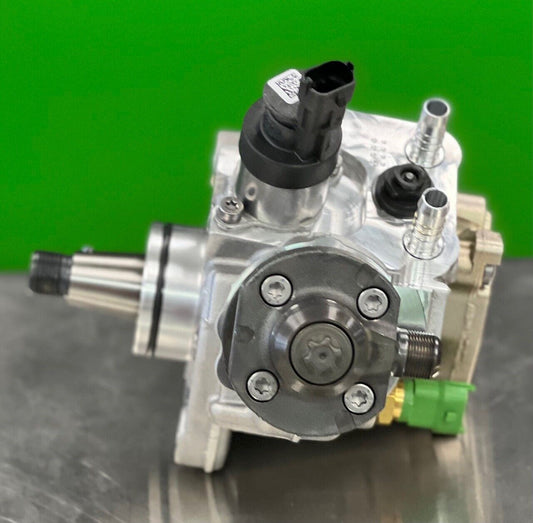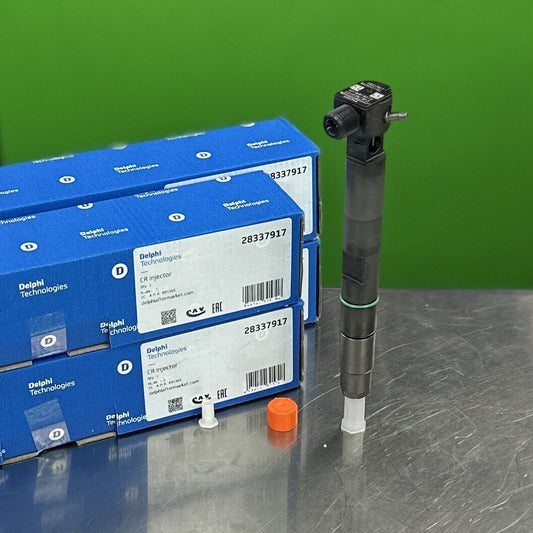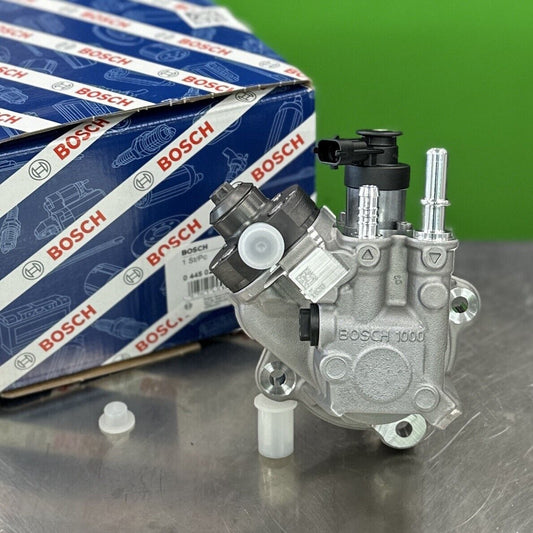Cummins 6.7L ISB Common Rail Injector Troubleshooting: Diagnosing and Solving Common Problems
When it comes to the Cummins 6.7L ISB common rail injector system, troubleshooting potential issues is crucial for maintaining optimal engine performance. Understanding the common problems that can arise, diagnosing them accurately, and implementing effective solutions are key aspects of ensuring the smooth operation of the injector system.
Common rail injectors play a vital role in the fuel delivery process of the Cummins 6.7L ISB engine. These precision components are responsible for injecting fuel into the combustion chamber at high pressure, allowing for efficient and controlled combustion. However, like any mechanical part, injectors can experience malfunctions that may impact engine performance.
Signs of injector problems can manifest in various ways, providing important clues for diagnosing issues. Symptoms such as rough idling, decreased fuel efficiency, engine misfires, and black smoke emissions are indicators that there may be underlying problems with the injectors. Recognizing these signs early on can help prevent more severe issues down the line.
When faced with potential injector issues, it is essential to follow proper diagnostic procedures to pinpoint the root cause of the problem accurately. This involves a step-by-step approach that may include using diagnostic tools, conducting visual inspections, and performing performance tests to assess the condition of the injectors thoroughly.
Common malfunctions that can affect the performance of common rail injectors in the Cummins 6.7L ISB engine include clogging, leaks, electrical faults, and wear. These issues can disrupt the precise delivery of fuel to the combustion chamber, leading to engine inefficiencies and reduced performance. Addressing these malfunctions promptly is essential to prevent further damage.
Repair and maintenance solutions are crucial for resolving injector-related problems and ensuring the longevity of the common rail injector system. By following recommended tips and techniques for maintaining the injectors, engine owners can mitigate potential issues and keep their Cummins 6.7L ISB engine running smoothly. Regular maintenance can help prevent unexpected breakdowns and costly repairs in the long run.
Understanding Common Rail Injector System
Understanding the common rail injector system in the Cummins 6.7L ISB engine is crucial for diagnosing and solving injector-related issues effectively. This system plays a vital role in the fuel delivery process, ensuring optimal engine performance. The common rail injector system works by delivering high-pressure fuel to the injectors through a common rail, which then injects the fuel into the combustion chamber at the precise moment. This method allows for better fuel atomization and combustion efficiency, resulting in improved power output and fuel economy.
At the core of the common rail injector system are the injectors themselves, which are responsible for spraying the fuel into the engine cylinders. These injectors are electronically controlled and operate at high pressures to ensure precise fuel delivery. The common rail, a high-pressure fuel reservoir, stores the fuel that is then distributed to each injector individually. This setup allows for more flexibility in fuel delivery timing and quantity, enhancing engine performance.
The common rail injector system consists of various components working together seamlessly to ensure proper fuel injection. These components include the fuel rail, injectors, high-pressure pump, pressure sensors, and electronic control module (ECM). The ECM plays a crucial role in monitoring and adjusting fuel delivery based on various engine parameters, ensuring optimal performance under different operating conditions.
Understanding how the common rail injector system functions is essential for identifying potential issues that may arise. By recognizing the role of each component and the overall system operation, technicians can effectively troubleshoot and address any injector-related problems that may affect the performance of the Cummins 6.7L ISB engine.
Signs of Injector Problems
When it comes to the Cummins 6.7L ISB common rail injector system, being able to recognize the signs of injector problems is crucial for maintaining the engine's performance. These signs act as red flags, indicating that there may be underlying issues affecting the injectors. Let's delve into the common symptoms that could point towards injector problems:
- Rough Idling: Have you noticed that your engine is idling roughly, causing vibrations and instability? This could be a sign of injector issues disrupting the combustion process.
- Decreased Fuel Efficiency: Are you finding yourself refueling more frequently than usual, despite driving similar distances? Reduced fuel efficiency could indicate injector problems affecting the engine's fuel consumption.
- Engine Misfires: Do you experience sudden jerks or hesitations while accelerating, indicating misfires in the engine? This could be a result of injector malfunctions affecting the fuel delivery process.
- Black Smoke Emissions: Are you noticing excessive black smoke coming from the exhaust pipe during acceleration? This could signal that the injectors are not functioning optimally, leading to incomplete combustion.
These signs should not be ignored, as they can escalate into more severe issues if left unattended. By recognizing these symptoms early on, you can take proactive measures to diagnose and address injector problems in the Cummins 6.7L ISB engine, ensuring smooth operation and optimal performance.
Diagnostic Procedures
When it comes to diagnosing potential issues with the Cummins 6.7L ISB common rail injector system, a systematic approach is crucial. The first step in the diagnostic process is to pay close attention to any abnormal signs exhibited by the engine. These signs may include rough idling, decreased fuel efficiency, engine misfires, or the emission of black smoke. Recognizing these symptoms early on can help in pinpointing the root cause of the problem.
One effective diagnostic method is to utilize specialized diagnostic tools that are designed to interface with the engine's onboard computer system. These tools can provide valuable insights into the performance of the injectors, allowing for a more accurate diagnosis. Additionally, visual inspections of the injector system can reveal any visible signs of damage, leaks, or clogs that may be affecting its operation.
Performing performance tests on the injectors can also be a valuable diagnostic procedure. By measuring the injector's output and response time, it is possible to assess their functionality and identify any deviations from the expected performance standards. These tests can help in determining whether the injectors are delivering the correct amount of fuel at the right time.
Furthermore, conducting a thorough examination of the electrical components associated with the injector system is essential. Any faults or inconsistencies in the electrical connections can lead to injector malfunctions. By checking the wiring, connectors, and control modules, it is possible to identify and rectify any electrical issues that may be contributing to injector problems.
In conclusion, a comprehensive diagnostic approach is essential when troubleshooting common rail injector issues in the Cummins 6.7L ISB engine. By following a systematic procedure that includes visual inspections, performance tests, and the use of diagnostic tools, it is possible to identify and address injector-related problems effectively. Timely diagnosis and intervention can help in ensuring optimal performance and longevity of the injector system.
Common Injector Malfunctions
When it comes to the Cummins 6.7L ISB common rail injector system, various malfunctions can arise that impact the engine's performance and efficiency. Understanding these common injector problems is crucial for timely diagnosis and effective solutions. Let's delve into the typical issues that can occur with the injectors of this powerful engine.
One of the primary injector malfunctions encountered is clogging. Over time, deposits and impurities can build up within the injectors, hindering the proper flow of fuel. This can lead to issues such as rough idling, engine hesitation, and reduced power output. Addressing clogging promptly is essential to prevent further damage to the injector system.
Leaks are another prevalent issue that can affect the performance of common rail injectors. Whether due to worn seals or damaged components, leaks can result in fuel wastage, decreased fuel efficiency, and potential safety hazards. Identifying and fixing leaks promptly is crucial to maintain the integrity of the injector system.
Electrical faults can also plague the injectors of the Cummins 6.7L ISB engine. Issues such as wiring damage, short circuits, or faulty connectors can disrupt the communication between the injectors and the engine control unit, leading to erratic performance and potential engine misfires. Thorough electrical inspections and testing are essential to pinpoint and rectify such faults.
Furthermore, wear is a common concern that can affect the longevity and efficiency of common rail injectors. Continuous usage and exposure to high pressures and temperatures can cause wear and tear on injector components, leading to diminished performance and potential failures. Regular maintenance and timely replacement of worn parts are key to ensuring the longevity of the injector system.
In summary, understanding the common injector malfunctions that can occur in the Cummins 6.7L ISB engine is paramount for maintaining optimal performance and reliability. By being aware of issues such as clogging, leaks, electrical faults, and wear, engine enthusiasts and technicians can proactively diagnose, address, and prevent injector-related problems, ensuring smooth operation and longevity of the common rail injector system.
Repair and Maintenance Solutions
When it comes to repairing and maintaining the common rail injectors in the Cummins 6.7L ISB engine, it's crucial to follow proper procedures to ensure optimal performance and longevity. Regular maintenance can prevent unexpected breakdowns and costly repairs down the line. Let's delve into some effective repair and maintenance solutions for keeping your injector system in top shape.
One of the primary maintenance tasks for common rail injectors is to regularly inspect and clean the injectors and fuel lines. Over time, carbon deposits and debris can accumulate, leading to clogging and decreased performance. By cleaning the injectors and fuel lines, you can ensure proper fuel delivery and combustion efficiency.
Additionally, it's essential to replace the fuel filters at recommended intervals. Fuel filters play a crucial role in preventing contaminants from reaching the injectors and causing damage. By replacing the filters regularly, you can maintain the cleanliness of the fuel system and prolong the life of the injectors.
Another important aspect of injector maintenance is to monitor fuel quality. Poor-quality fuel can contain impurities that can damage the injectors and affect engine performance. Using high-quality fuel and additives can help prevent injector issues and ensure smooth operation of the engine.
Regularly checking for leaks in the fuel system is also vital for maintaining the common rail injectors. Leaks can lead to fuel wastage and air ingress, affecting the fuel pressure and injector performance. By addressing any leaks promptly, you can prevent further damage to the injectors and ensure efficient fuel delivery.
When it comes to repairing common injector malfunctions, it's essential to address issues such as clogging, leaks, electrical faults, and wear promptly. Ignoring these problems can lead to engine performance issues and potential breakdowns. By following proper diagnostic procedures and using the right tools, you can identify and resolve injector malfunctions effectively.
In some cases, it may be necessary to replace worn or damaged injectors to restore optimal performance. Working with a qualified technician or mechanic can help ensure that the injectors are replaced correctly and calibrated to the manufacturer's specifications. Proper installation is key to preventing future injector-related problems.
Overall, proactive maintenance and timely repairs are essential for ensuring the smooth operation of the common rail injectors in the Cummins 6.7L ISB engine. By following the recommended maintenance schedule and addressing any issues promptly, you can enjoy reliable performance and fuel efficiency from your engine.
```htmlFrequently Asked Questions
-
What are the common signs of injector problems in the Cummins 6.7L ISB engine?
Common signs of injector problems include rough idling, decreased fuel efficiency, engine misfires, and black smoke emissions. If you notice any of these symptoms, it may indicate issues with the injectors that require attention.
-
How can I diagnose injector problems in the Cummins 6.7L ISB engine?
Diagnosing injector problems involves using diagnostic tools, conducting visual inspections, and performing performance tests. By following a step-by-step guide, you can pinpoint the root cause of injector issues and take appropriate action to resolve them.
-
What are some common malfunctions that can affect the performance of common rail injectors?
Common malfunctions that can impact the performance of common rail injectors include clogging, leaks, electrical faults, and wear. These issues can lead to decreased engine efficiency and other problems if not addressed promptly.
-
How can I repair and maintain the common rail injectors in the Cummins 6.7L ISB engine?
To ensure optimal performance and prevent future injector-related issues, it is essential to follow repair and maintenance tips. Regular maintenance, such as cleaning, inspecting for leaks, and addressing electrical faults, can help prolong the lifespan of the injectors.



